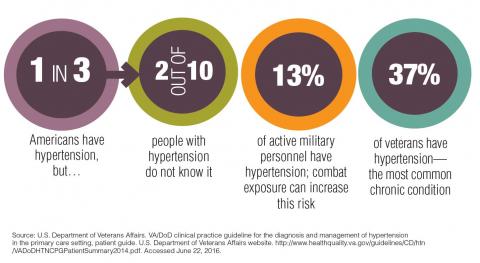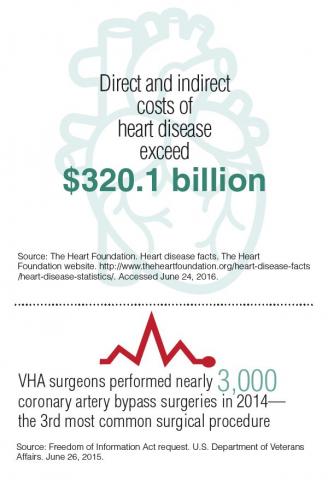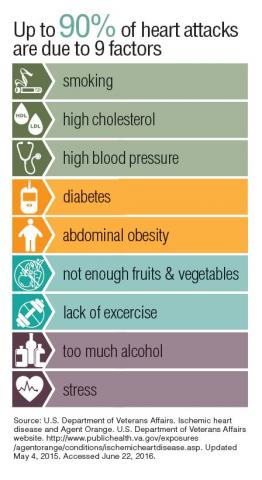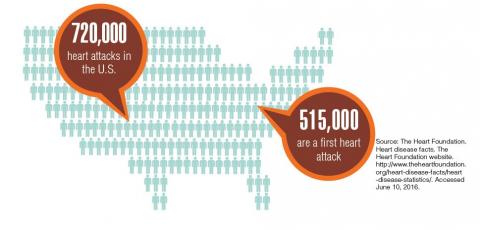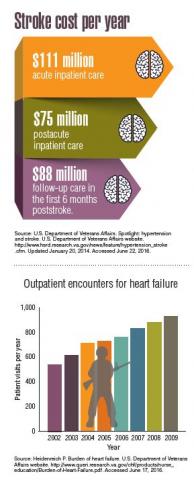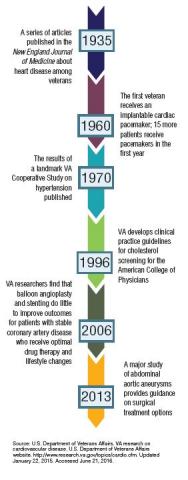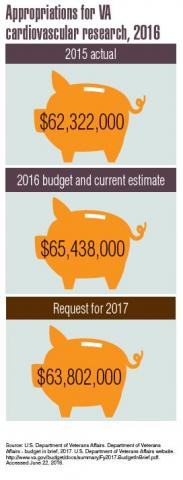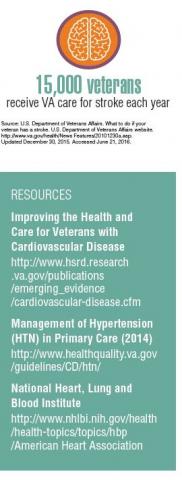Cardiovascular disease (CVD) is the leading cause of death in the U.S. According to the Heart Foundation, every 34 seconds someone in the U.S. has a heart attack, and every minute, someone in the U.S. succumbs to a CVD-related event. The rates of heart attacks and CVD are similar for veterans. Cardiovascular disease is a major area for VA research and treatment.
Most heart attacks are due to smoking, high cholesterol, high blood pressure, diabetes mellitus (DM), obesity, diet, lack of exercise, high alcohol use, and stress. Many of these risk factors trend higher for veterans. Within the VA, CVD is the top reason for hospitalization. Perhaps contributing to this, veterans have higher rates of DM, obesity, and smoking. Some veterans also are at higher risks due to exposure to hazardous materials. Veterans with ischemic heart disease who were exposed to Agent Orange or other herbicides during military service do not have to prove a service connection.
The VA also takes a prominent role in enabling research that addresses CVD. In 2015, it appropriated more than $62 million to fund heart disease/cardiovascular health research. The VA plans to increase funding for the 2017 budget and requested nearly $64 million for CVD research.

